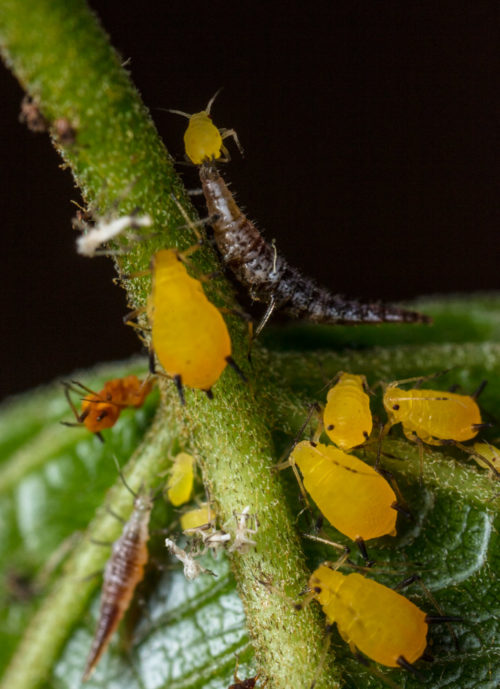
This plant in my garden was infested with yellow coloured aphids. These belong to Aphis nerii an aphid of the family Aphididae. Its common names include oleander aphid, milkweed aphid, sweet pepper aphid, and Nerium aphid. Last time when I saw them, they were tended by White-footed ants. You can check that story in my blog –White Footed Ant with Aphids.
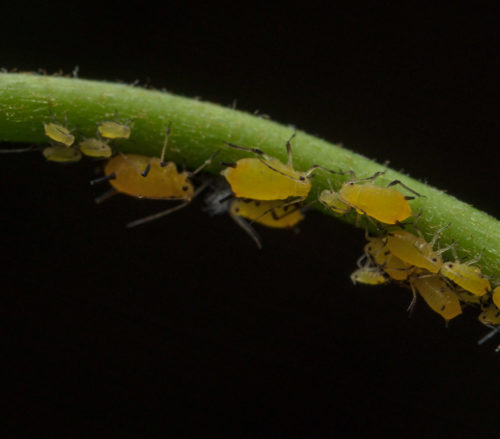
Now the ants were missing. I also noticed several carcasses of dead or dying, shrivelled aphids. Then I spotted their hunters – there were several lacewing larva Chrysoperla species feeding voraciously on these aphids. Lacewing Larva vs Aphids is one of the finest examples of biological pest control. I captured these photos using anon EOS 5DS R with Canon MP-E 65mm f/2.8 1-5x Macro lens and Canon MT-24EX macro twin light flash. These are taken at around 2:1 magnification handheld which resulted pretty shallow depth of field.
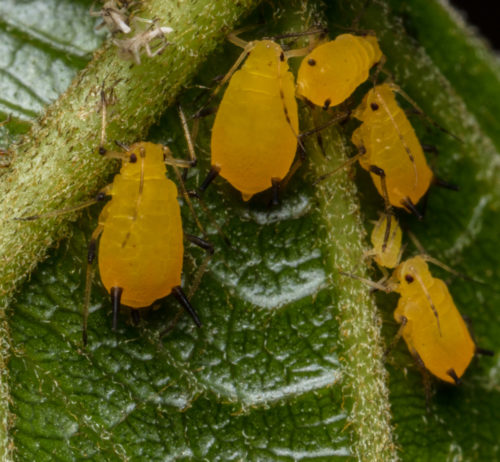
Aphids are soft-bodied insects that use their piercing-sucking mouthparts to feed on plant sap. They usually occur in colonies on the undersides of tender terminal growth. Heavily infested leaves can wilt or turn yellow because of excessive fluid removal. While the plant may look bad, aphid feeding generally will not seriously harm healthy, established trees and shrubs.
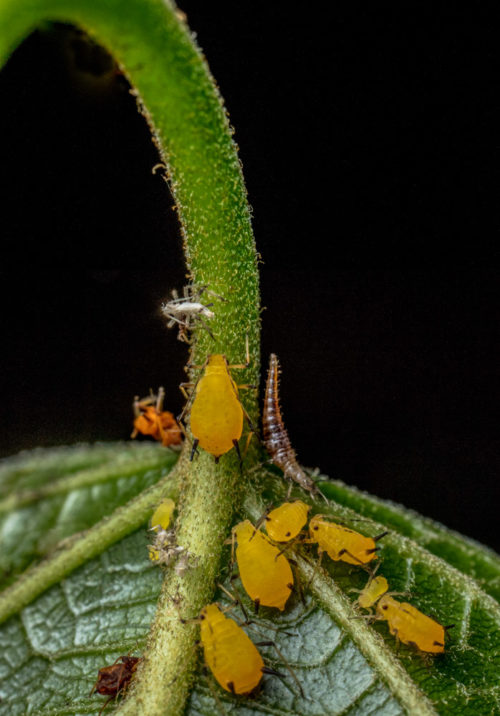
Aphids feed on the sap of plants and secrete a substance called honeydew. This sticky sugary resin is a favourite food of ants, who actually “milk” the aphids for it by stroking their abdomen. That is why sometimes aphids are called “ant cows”.
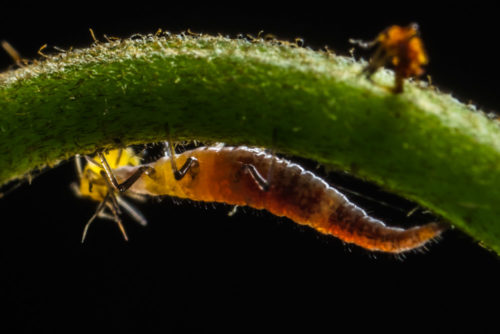
Lacewings are an often-under-appreciated group of beneficial insects. As with lady beetles, these natural enemies are important predators of many types of soft-bodied insects and insect eggs. These insects and their contribution to insect control are immense.
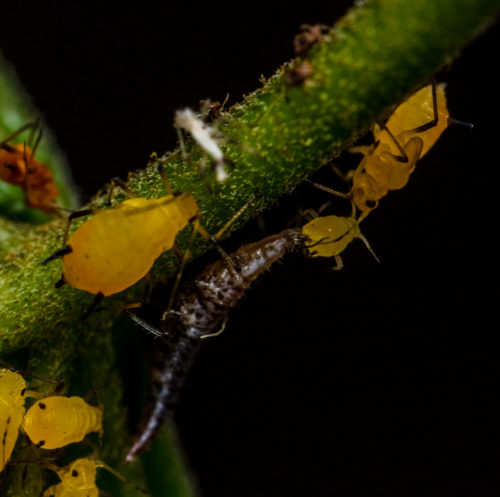
The adult lacewing is weak fliers and is commonly found near aphid colonies. The adults feed mostly on nectar, pollen, and honeydew but with some species, the adults will feed on insects. Lacewing larvae, ideal for controlling aphids, are commonly used as generalist predators for garden and farm insect control. Predatory in the larval stage, Lacewing feed on a wide range of soft-bodied insects in various life stages.
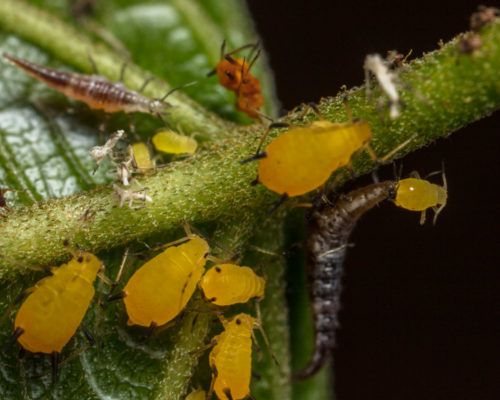
Lacewing larvae paralyze their prey with venom and feed on the body fluids of the pest. Each lacewing larva will devour 200 or more pests or pest eggs per week during their two to three-week developmental period. Larvae eat any small insect they encounter, and aphids (smaller flying insect that are the bane of gardeners and growers) are on top of the list. For this reason, they are also called “aphid lions”.
Aphids drink the juices of young plants, often killing them. Infestations are difficult to eliminate due to their rapid reproduction rate. Ants herd aphids like sheep in order to collect the sweet ‘honeydew’ they secrete from their bottoms. Because Lacewing larvae eat aphids, ants are quick to kill them to protect the herd. Unchecked by ants, Lacewings can control aphid populations without the need for chemical pesticides.
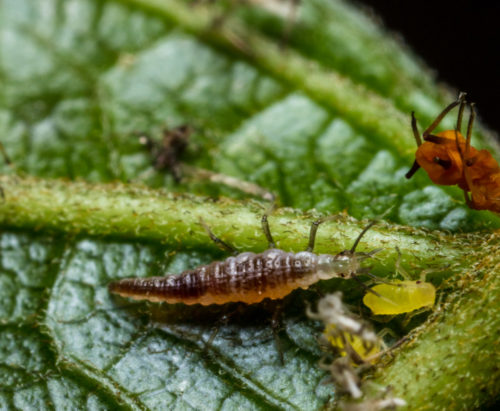
Lacewing eggs are either laid singly or in small groups. Each is always found perched on the tip of a hairlike stalk that is about 1/2 inch long. This helps to reduce cannibalism of the eggs by sibling larvae. Females will usually deposit the egg close a food source for the larvae.
Lacewing larvae are brown and white and may grow up to about 1/2 inch in length. The larvae will pupate on the plants which they were searching for insect prey. The pupa is light in colour and egg-shaped.
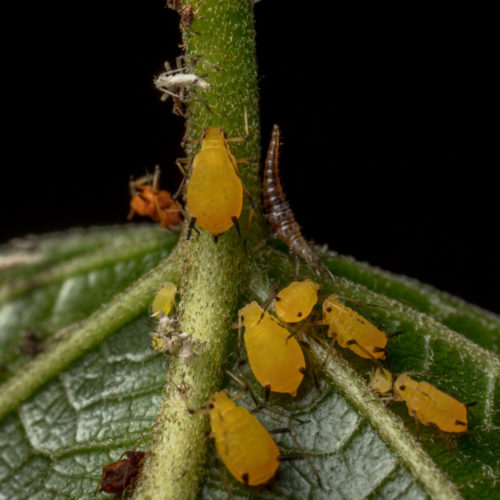
Rarely, lacewing larvae have been known to bite humans. But this is usually nothing more than a small skin irritation. Despite these rare encounters, they remain important natural enemies of many insect pests.
Check my earlier blogs on the aphids –

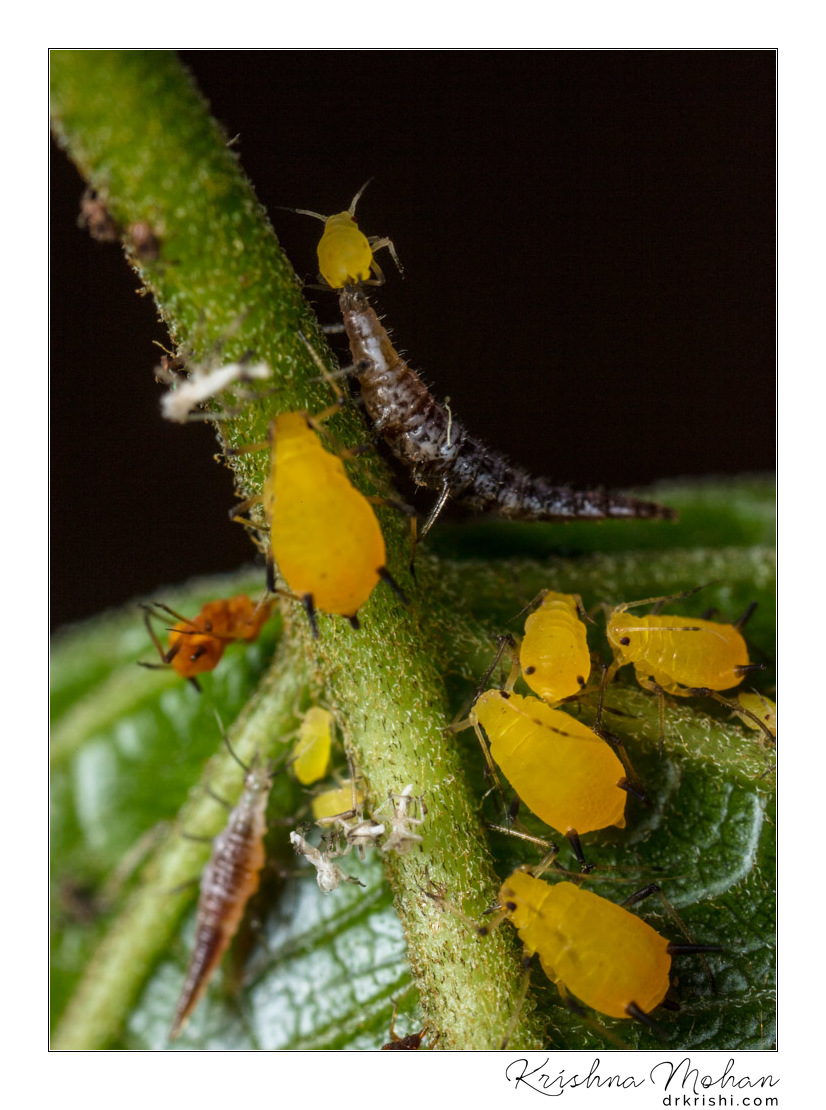
Wonderful piece of information accompanied by great pictures!!